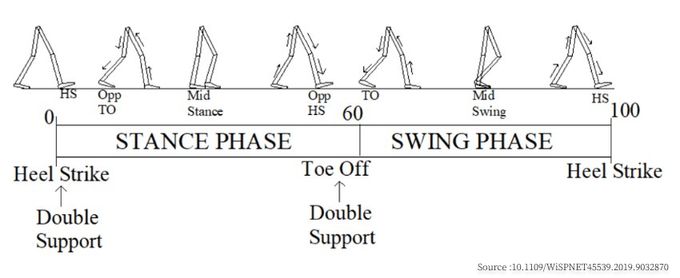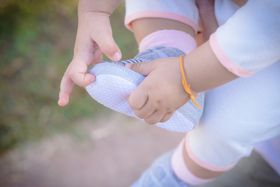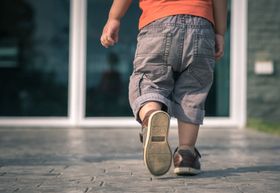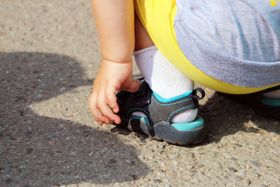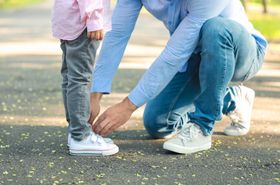How to Identify Early Signs of Foot Drop in Children
Updated September 21, 2023.

Have you noticed any changes in how your kid walks? It may be time to monitor their developmental milestones and tackle emerging challenges head-on.
One such concern could be foot drop, a condition that can significantly affect young ones' movements and overall comfort. If your child has foot drop, they may be unable to lift the front of their foot, leading them to drag it when walking.
The most common causes of foot drop are either neurological or muscular. It can occur because of damage to the peroneal nerve in the leg or when the tibialis anterior muscle, which helps lift the foot, doesn't work well. Other reasons can include motor neuron disorders or nerve root injuries.
» Discover when to buy baby shoes
Early Signs of Foot Drop
What Does Foot Drop Look Like?
Kids with foot drop may drag their toes across the ground or bend their knees more to lift their feet higher. This walking pattern is known as "steppage gait." This condition makes it hard for children to walk easily and stay balanced, impacting their independence and physical activity.
Baby Dragging One Foot When Walking
If your baby has foot drop, you may see a unique crawling or walking style where they consistently drag one foot.
When they crawl, one knee may touch the ground while the other stretches out, causing one foot to lag and scuff against the floor. This asymmetrical movement suggests they're having trouble lifting or controlling one of their feet.
When your baby starts walking, they may often trip because they can't lift the front part of one foot. While all babies fall sometimes, you may see them bending their knee a lot on the affected side, trying to lift that foot higher than usual with each step.
» Check out the best shoes for babies learning to walk
Foot Slaps When Walking
The peroneal nerve, a sciatic nerve branch, controls the front part of the lower leg. If this nerve is damaged, it can cause numbness, tingling, and muscle weakness, especially in the tibialis anterior muscle, which helps lift the foot.
This weakness can result in a loss of heel strike while walking, causing your child to slap their foot against the ground as they move. This problem can affect one or both legs and tends to become more noticeable over time.
Toddler Walking on the Side of the Foot
If the muscles responsible for lifting the front of the foot are weakened, and your child cannot complete the heel strike to toe-off phase of the gait cycle, they may start to roll their foot outward, primarily using the side of the foot to touch the ground.
While this walking style helps them avoid toe dragging, it disrupts the foot's natural alignment and increases their chances of tripping. If not corrected, your child will continue using this altered walking style, leading to ongoing balance issues, limited movement, and decreased confidence.
Walking Problems and Unsteadiness
A child with foot drop often finds it challenging to walk because they can't control their movements properly and struggle to maintain a natural walking rhythm. This lack of control also disrupts the balance between their eyes, inner ear, and body's sense of position.
When these systems are out of sync, it reduces your child's stability and raises their risk of accidents and falls.
» Learn how to help your little one walk on their own
When to Seek Medical Attention
If you see any of the signs mentioned above, seek guidance from a paediatrician or a healthcare specialist with expertise in child development. Early intervention can prevent these habits from sticking and help avoid complications like stiff joints, muscle imbalance and reduced mobility.
To check for foot drop, doctors may:
- Do a physical examination, looking at how your child's foot moves while walking
- Run tests like MRIs, nerve conduction studies (NCS), or needle electromyography (EMG)
- Ask about your kid's medical history, including autoimmune diseases and nerve problems
Physical therapy can help strengthen the muscles responsible for lifting the front part of the foot. Through these exercises, a child can restore muscle function and gradually regain control over foot dorsiflexion.
Early intervention techniques, like neuromuscular re-education, can enhance the connection between nerves and muscles. Braces or splints can also offer added support to the foot and ankle, ensuring they stay aligned and function correctly.
However, if the foot drop is due to an injury, it's essential to repair the nerve within 72 hours of the trauma.
Addressing Foot Drop Early On
Foot drop, while concerning, is not a rare condition. If you observe it in your child, remember there are solutions available to help them walk confidently.
For added ankle support, consider exploring First Walker's collections. These shoes are lightweight and have non-slip soles with arch support to help keep the feet, ankles, and legs properly aligned.
